How To Improve And Maintain Correct Body Posture
Body Posture is the way in which you hold yourself while sitting, standing, and lying down. Good posture keeps all of your joints and bones aligned, reducing stress on muscles and ligaments. So maintaining good posture is important to prevent muscle fatigue and injury. However, due to our lifestyles, our posture might suffer. In this article, you will get to know all about body posture. Along with it, we have included tips on how to prevent injury and some exercises too!
When your body is pushed to work in a certain manner, it results in excessive stress in your joints, muscles, and ligaments. As a result of the new routine, your body undergoes unpleasant changes that are visible in your posture. Poor posture often leads to back pain. But there are several small changes you can make to your daily routine to prevent this by improving your posture.
What is Body Posture?

Posture is how you hold your body. There are two types of postures:
- Dynamic posture is how you hold yourself when you are moving. For eg, when you are walking, running, or bending over to pick up something.
- Static posture is how you hold yourself when you are not moving, like when you are sitting, standing, or sleeping.
It is important to make sure that you have good dynamic and static posture.
The key to good posture is –position of your spine. Your spine has three natural curves – at your neck, mid-back, and low back. Correct posture should maintain these curves, but not increase them. -Your head should be above your shoulders, and. -the top of your shoulder should be over the hips.
How can bad my body posture affect my health?
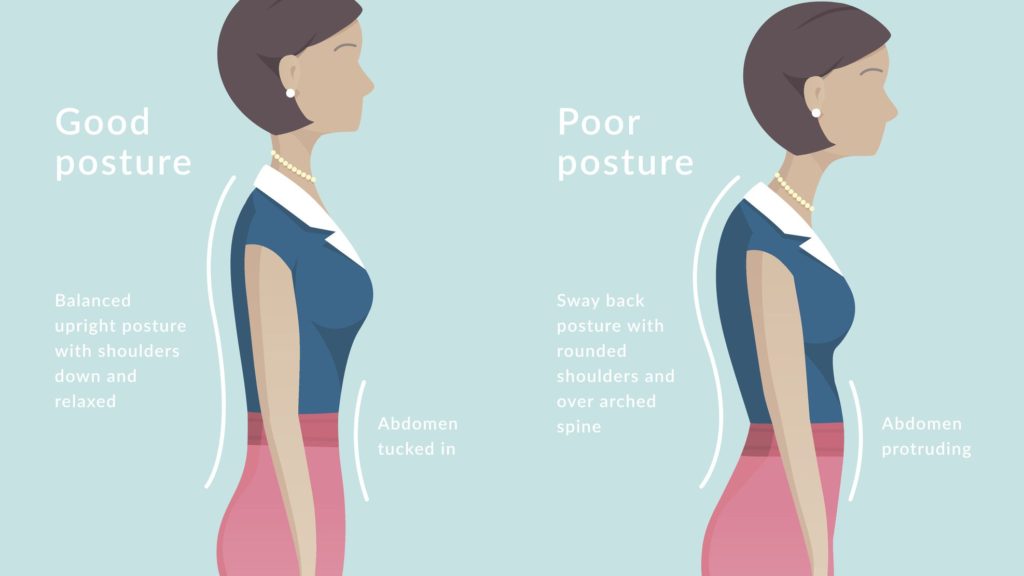
Bad body posture can be developed over a period of time. Increased slouching, overuse of mobile phones, excessive sitting can result in an unbalanced body posture. This can further lead to severe problems such as:
- Misalign your musculoskeletal system
- Wear away at your spine, making it more fragile and prone to injury
- Cause neck, shoulder, and back pain
- Decrease your flexibility
- Affect how well your joints move
- Affect your balance and increase your risk of falling
- Make it harder to digest your food
- Make it harder to breathe
Thus it’s important to maintain an ideal posture. Apart from stretching and exercising, being mindful of your posture can save you a doctor’s visit! Here are common mistakes and their corrections!
1) Maintaining correct posture while sitting
While at the desk, it’s important to keep your monitor at eye level to avoid twisting of the neck. Also, avoid taking your child into your chest. Furthermore, keep your back straight and to prevent your shoulders from rolling forward. You want your weight to be evenly distributed while you keep your feet flat to the ground. Also, make sure the height of your chair is adjusted so that your knees bend at a natural 90-degree angle!

If you’re suffering from back pain, try using an ergonomic chair for work. Secondly, an exercise ball can be an effective tool to break up the bad practice of prolonged sitting. But don’t use it for more than 30 minutes at a time! Sitting on an exercise ball can activate core muscles which help to stabilize the spine.
Similarly, standing desks can also be used to break up long periods of sitting. It is recommended to stand no more than 30 minutes at a time to guard against fatigue and worsening symptoms.
2) Maintaining correct posture while standing
Having good posture while standing is important, especially if you are on your feet all day. If you are standing with proper posture, you reduce stress on your body. Also, you may have more energy, as your muscles are used most efficiently.
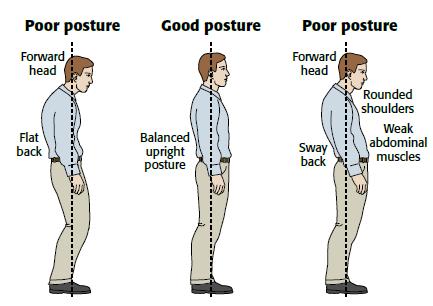
Firstly, try to keep your weight on the balls of your feet, your knees slightly bent, and feet positioned about shoulder-width apart. Your arms should hang naturally at your sides.
Secondly, keep in mind that when standing correctly, your legs should be straight but not locked. So you can push your feet into the floor and lengthen your spine. This way your head, shoulders, hips, and knees should line up.
It’s easier said than done! Not locking your knees while standing for long durations is a hard task! However, your physician or physical therapist may be able to recommend exercises to retrain and strengthen your core so that you stand tall which in turn helps you avoid slouching.
3) Correct position while sleeping or lounging in bed
After a long day at work, everyone longs for a soft cozy bed and a good night’s sleep! What if we told you that sleeping can also cause your posture to deform?! Yes, it can put indie stress on the spine and neck. This can lead to spinal injuries too! Here are the do’s and don’ts of sleeping!
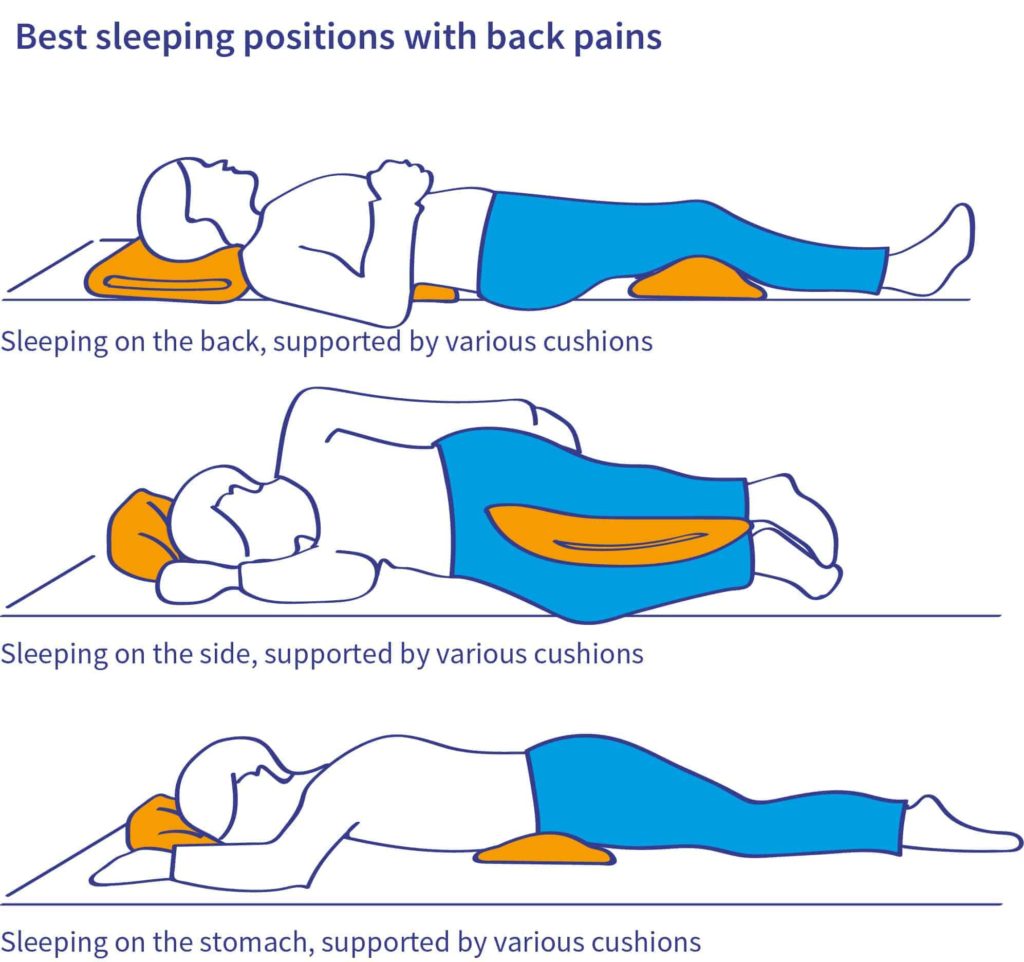
When getting horizontal, avoid lying down on your back with your head bent on a large angle on a pillow. This puts undue stress on your neck and shoulders instead of relaxing them. So, prop some pillows behind your back for some support, and bend your legs, and put a pillow under your knees.
According to sleep.org, sleeping on your back is best but only 8% of the population chose this option! No extra pressure is put on your head, neck, and spine when you rest facing-up with your head slightly elevated to be in line with the rest of the body.
Also, firm mattresses are recommended. Avoid sleeping on your stomach or curled up into a ball. So consider flipping over if you are a tummy or side sleeper as poor sleep posture can also contribute to neck and back pain.
4) Correct posture while lifting
While it might seem as if you should just bend over and hoist up your load, resist that urge! Instead, move as close to the load as you possibly can. This will put less force on your lower back. As you squat down to pick it up, keep yourself upright, and resist the temptation to bend into the load. Simultaneously, tighten up those stomach muscles. But do not hold your breath. Put your legs to work and lift with them. As you move the load, be sure to do so by turning with your feet, but not with your back.

Many people face severe injuries like that of slip discs and muscle strain. This can be prevented by using the correct posture for lifting heavy objects. However, it’s recommended to not lift objects heavier than 30 pounds. So the next time you bend to lift heavy objects, think of your back first!
Exercises to help maintain a correct body posture
Due to our daily activities, our body tends to get cramped and stiff. It’s necessary to stretch and strengthen our muscles. Exercise helps to maintain the effective balance and functioning of the body. This helps in maintaining correct body posture throughout long durations of time.
1) Child’s pose
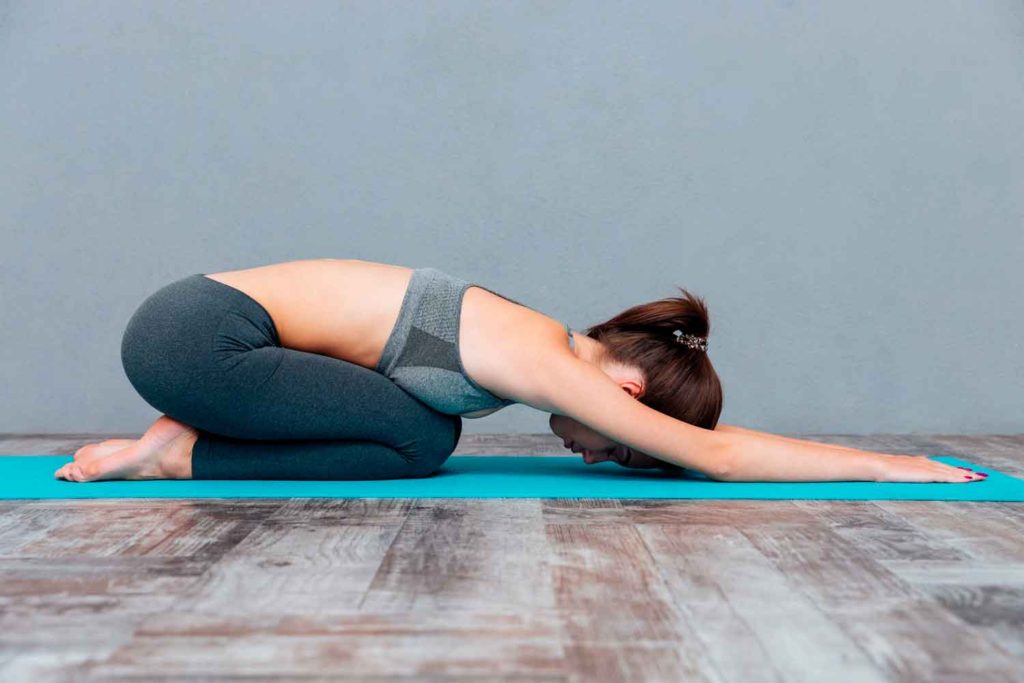
This resting pose stretches and lengthens your spine, glutes, and hamstrings. The child’s pose helps to release tension in your lower back and neck.
2) Cat cow
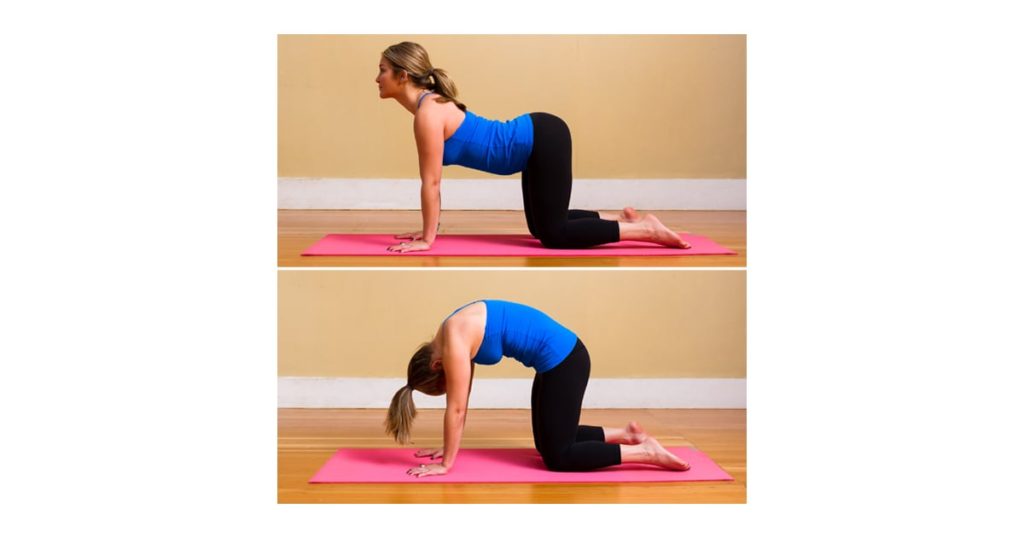
Practicing cat cow stretches and massages your spine. It also helps to relieve tension in your torso, shoulders, and neck while promoting blood circulation.
3) Chest opener
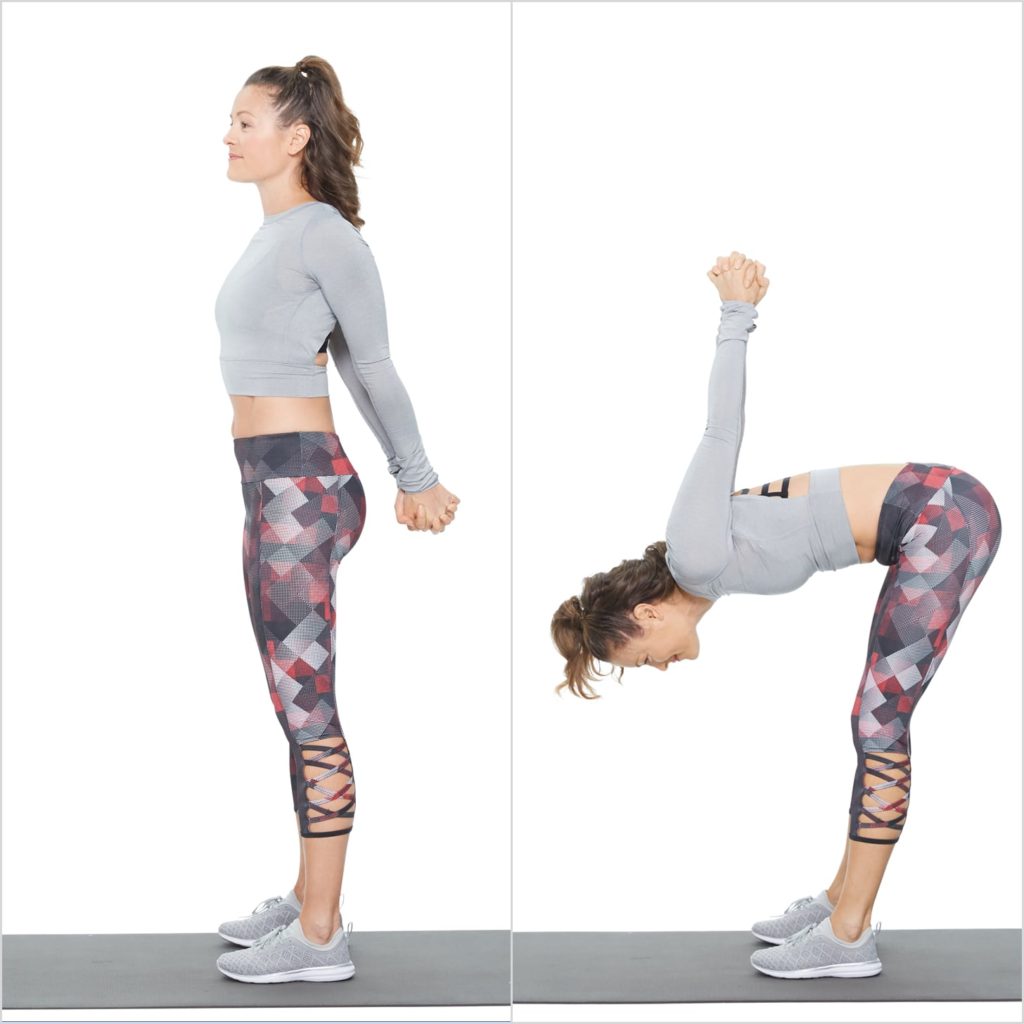
This exercise allows you to open and stretch your chest. This is especially useful if you spend most of your day sitting, which tends to make your chest move inward. Strengthening your chest also helps you stand up straighter.
4) Pigeon pose
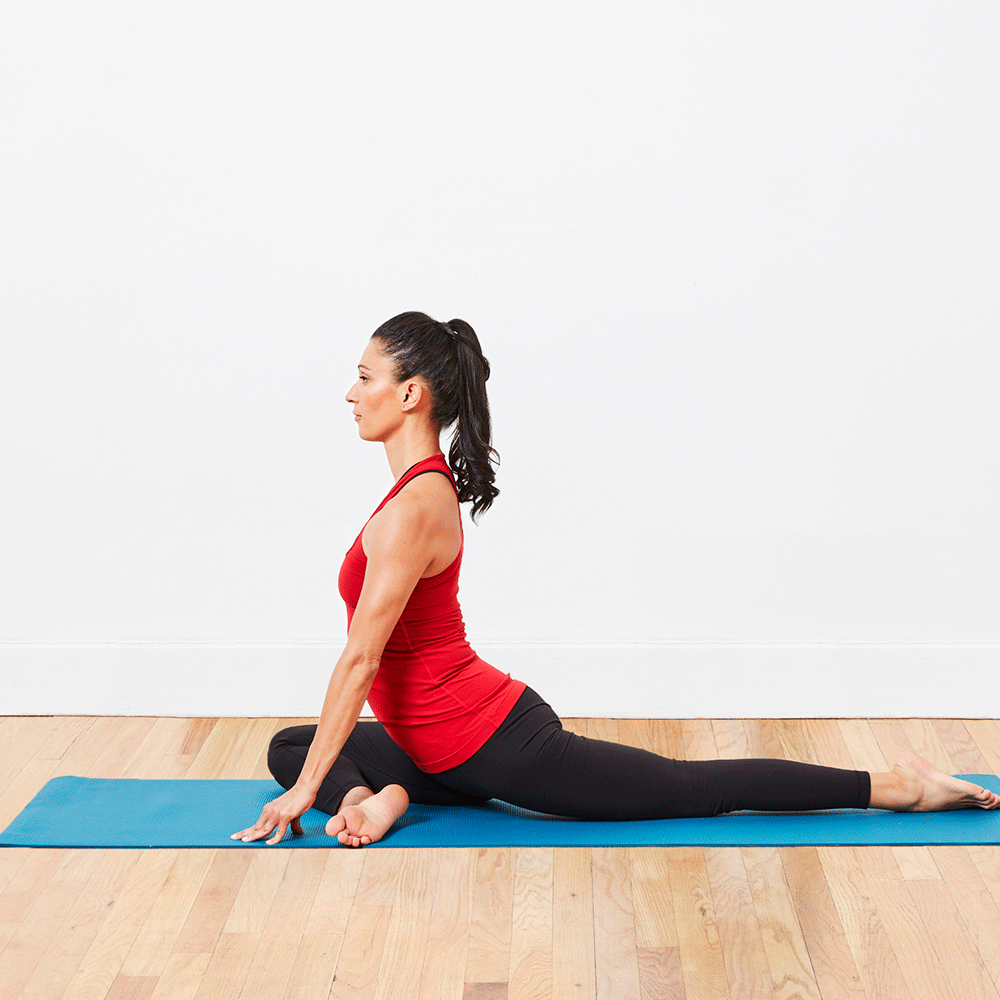
This is a hip opener that also loosens up your spine, hamstrings, and glutes. The pigeon pose can also help to stretch your sciatic nerve and quadriceps. Opening and stretching these places in your body makes it easier to correct imbalances in your posture.
5) Thoracic spine rotation
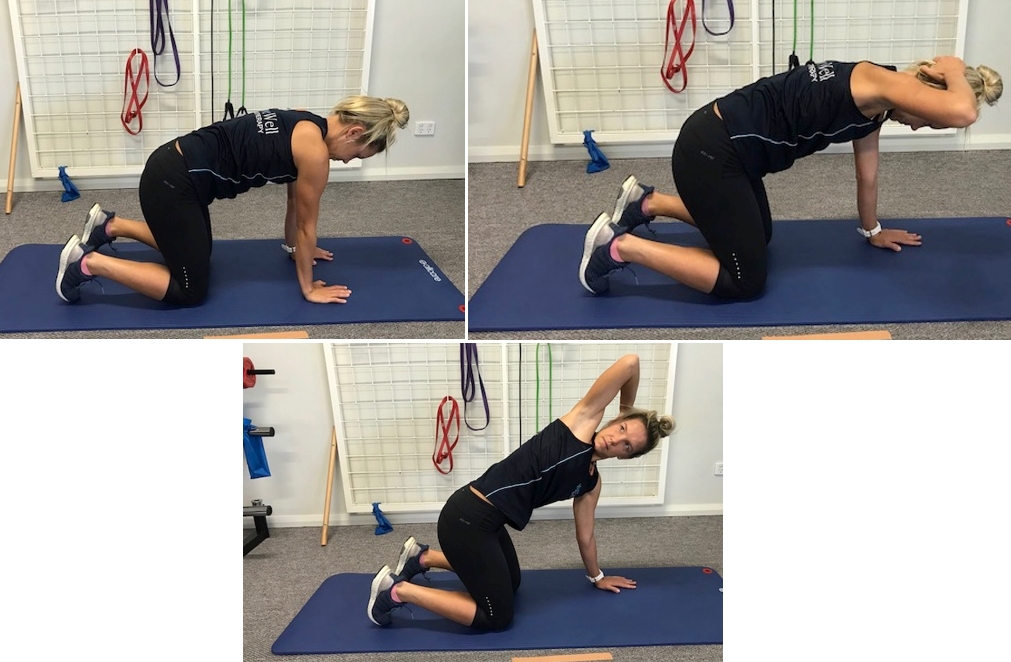
This exercise relieves tightness and pain in your back while increasing stability and mobility
6) High plank
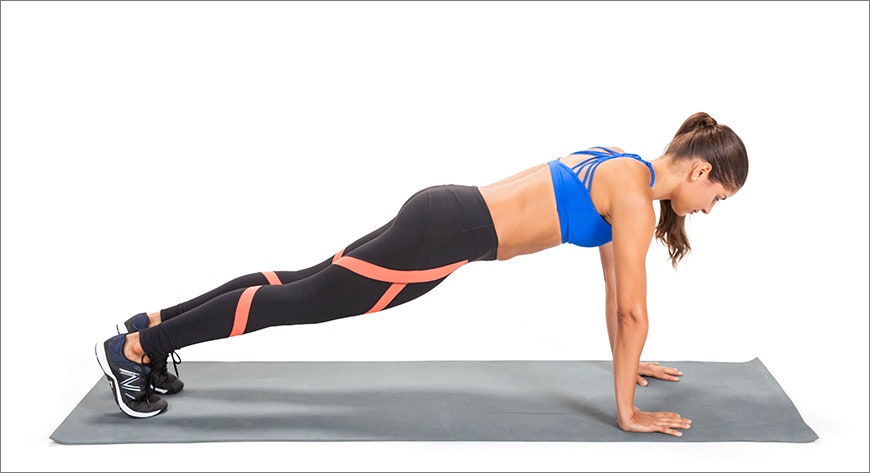
The high plank pose helps to relieve pain and stiffness throughout your body while strengthening your shoulders, glutes, and hamstrings. It also helps you develop balance and strength in your core and back, both important for good posture.
Apart from these stretches and exercises, make sure to go to a physiotherapist to check your body alignment.
A correct body posture can help you stay fit and energized throughout the day. Furthermore, it has proven effective to reduce stress! Simple steps to correct your posture goes a long way! Practicing stretches and exercises daily leaves your body flexible and agile. Make sure to start your day with at least ten minutes of full body stretches. Surya namaskar is also a great full-body stretching exercise.
Take good care of your body by implementing these simple lifestyle changes. You will certainly feel the difference!
If you liked the article, share it with your friends and family! Let them get a taste of a healthy body!
Till then, stay fit and stay healthy!




